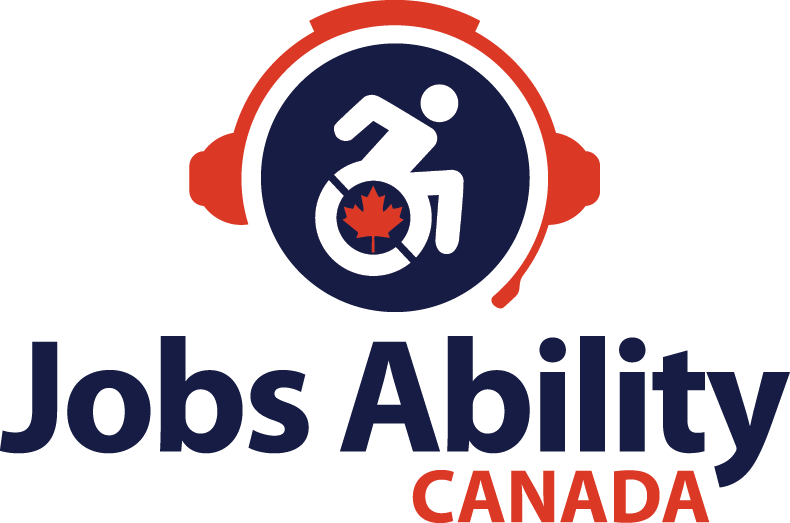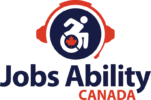
What to Understand About the Power of Inclusive Hiring
June 18, 2021
Choose Words Wisely — Disability Language Can Empower or Exclude
July 5, 2021How to Charge Up the Power of Inclusion

As we covered in part one of this series, disability inclusion, or disability-inclusive hiring, is a powerful thing. It’s a practice that has a lot of business benefits when it’s approached the right way — intentionally, that is. One of the key steps — the first, arguably — is making sure disability is included in the diversity and inclusion (D&I) conversation and strategy for your business.
This is essential. Because disability intersects with other diversity: A skilled, qualified candidate who’s the ideal “fit” for the role and has a disability, may also identify as a person of colour, or as a youth, for example.
Leaving disability out of the D&I conversation means you’re leaving out the world’s largest minority group: The World Health Organization notes that 15% of the global population identifies as having a disability.
Understanding D&I difference is crucial
You need to look at D&I separately. They’re not the same. You can have a culture of diversity, but you may not have a culture of inclusion. The two have erroneously “been coupled for the last 40 years,” according to a Gallup article by Ella Washington and Camille Patrick.
“Lumping them together reduces an organization’s ability to improve both. Understanding and addressing them separately is essential,” the co-authors noted in their article, 3 Requirements for a Diverse and Inclusive Culture.
Here’s the difference:
- Diversity means there are people from different ethnicities, religions, genders, orientations and abilities in your business.
- Inclusion, on the other hand, means everyone feels safe, comfortable, valued and accepted in their work environment.
Pandemic prompts more D&I conversation
Ironically, the coronavirus pandemic is playing a key role in helping businesses take that first “how-to” step of making disability part of the D&I conversation. In the new work-from-home normal, all employees are being accommodated one way or another. Whether it’s through flexible hours, or making sure staff have the software and hardware they need to work remotely, and be productive and successful in their jobs.
The pandemic has smashed through some perceived barriers to employment for people who have a disability; crushed some of the myths about disability; and sparked more conversation about inclusive hiring.
Moving from talk to action
So that’s step one. Make it part of the conversation. But where do you go from there?
There are several things businesses need to do, to successfully implement inclusive hiring. Things must start at the top. The CEO — or, in a smaller enterprise, the business owner — needs to own D&I and drive it.
Steve Sharpe, the CEO of Sharpe Foods in Campbellford, ON and a member of the Ontario Disability Employment Network’s (ODEN) Business Champions League, has addressed other business leaders about the benefits of inclusive hiring. In a Business Champion profile interview, he put it this way: “That’s where being supported at the top helps. That’s why it was nice to talk to all those business leaders. If they go back to their human resources people and say, ‘Explore this opportunity,’ it’s more likely to happen than if somebody else does it.”
As Deloitte points out in its 2017 Global Human Capital Trends Report, link to: there’s a “reality gap” and “results appear to be too slow” when CEOs leave D&I to human resources or the “chief diversity officer.”
“Diversity and inclusion is a business responsibility, not an HR responsibility,” Deloitte notes, and it must be “part of the corporate infrastructure, just like compliance, IT, and security…”.
Stepping stones on path to power of inclusion
Here are some of the other keys to harnessing the power of inclusion:
Forget the old rules of D&I. Follow the new ones. Deloitte published the “old rules” and the “new rules” of D&I in its 2017 Global Human Capital Trends Report. While there are seven so-called rules in both approaches to D&I, they’re significantly different. One of the key differences is the way diversity is defined. Under the old rules, or old thinking, D&I “is defined by gender, race, and demographic differences.” The new rules define D&I more broadly, “including concepts of ‘diversity of thought,’ also addressing people with autism and other cognitive differences.”
While that latter component speaks to a very specific group or demographic, it could be considered a start at including disability in the new rules of D&I. (It’s important to remember that legislation in countries like Canada, the U.S., Australia, New Zealand and the U.K., as well as the United Nations, defines disability much more broadly.)
Move from being compliant to being strategic about D&I. Deloitte developed a new, four-level model of D&I maturity for businesses to follow and measure their progress. It’s a model that requires a change of thinking at the C-Suite level; of moving from thinking of D&I as “a problem to be managed” and complying with legislation, to strategically “leveraging difference to create business value.”
- At Level 1, businesses are still in compliance mode on D&I initiatives.
- In Level 2, they start D&I programs, but they’re ad-hoc and D&I is seen in terms of numbers and targets to meet.
- Transition starts at Level 3, when the business leaders start taking ownership of D&I.
- When they reach Level 4, D&I is ingrained in the organization and its people, and there’s a true culture of inclusion. According to Deloitte’s research, only 12% of businesses have reached this fourth level of D&I maturity.
Make inclusion part of your brand. Your brand is much more than having a logo for your business. Brand is everything you do and everything you say; and how you do and say those things. Tyrrell Schmidt, the Vice-President of Global Brand and Customer Experience Officer at TD Bank, said in a November 2018 Strategy article: “Inclusion and diversity are core to who we are. We want to make sure that we’re reflecting those values and reflecting our customers and employees in everything we do.”
Making inclusion part of your brand can include things like universal design. That is, making sure you take into account the experiences of people who have a disability in the process of developing new products. Or, make accommodations a standard offering — for everyone, not as an exception. As mentioned earlier in this article, this is what’s happening for many businesses in the new work-from-home environment created by the coronavirus pandemic.
When intentional D&I is an integral part of your brand— regardless of business size, there are big pay-offs. When customers or clients, and employees, alike see themselves reflected and feel valued, and good about being an employee or customer of your business, this is inclusion. Which leads to numerous business benefits. These are some of the benefits that research has shown are possible: Businesses that practise inclusive hiring experience 45% more productivity, and 30% higher profit margins. As well, employee turnover is lower. Staff retention rates are 72% higher among staff who have a disability.
D&I awareness training that intentionally includes conversations about disability is a good first step before you begin implementing intentional inclusive recruiting. Investing in D&I education for your employees does two important things:
- It shows your commitment — at the highest levels of the business — to creating a truly inclusive environment.
- Employee education can help overcome resistance to change.
Providing staff with disability awareness training can help dispel myths. As Danielle Collier noted in a 2016 Cornell University ILR School report on best practices for inclusion, it “helps to decrease stereotypes and judgements about individuals with disabilities, and can also offer concrete suggestions for interacting with people with disabilities.”
Training is important. However, removing bias — especially unconscious bias — is even more important. That’s because it can skew training, recruiting and the entire organizational culture on D&I. Businesses need to eliminate “measurable bias” from all talent processes (hiring, promotion, performance management, leadership development, succession and compensation.) There is more focus on doing this, Deloitte research has found.
“People today are slowly becoming aware of both unconscious and explicit bias, and some organizations are starting to take action to expose the issue and make institutional changes to deal with it,” notes the 2017 Global Human Capital Trends Report.
Proactively — not reactively — source qualified talent from the disability talent pool. If you’re not doing this, you’re missing out on many opportunities and the business benefits mentioned in part one of this series. Even more important, when you intentionally recruit and hire qualified people who have a disability, you’re creating a culture of inclusion. You’re beginning to harness the power of it.
The top two ways that job-seekers who have a disability find roles they’re qualified for are:
- Through their networks
- With the assistance of professional employment services providers
Hiring managers and recruiters, then, need to do the same thing, from their side:
- Spread the word in your networks that there’s a role to be filled
- Connect with providers who can match your needs with the right candidate
Working with employment service providers that support job seekers who have a disability, can help make the disability recruiting and hiring process easier than you thought it was going to be.
Make everyone accountable. You need to have some key performance indicators around D&I for everyone. Especially managers. Managerial accountability is one of the “new rules” of D&I. When everyone has a stake in sustaining an inclusive culture, it will be sustainable. Accountability comes in at Level 3 of Deloitte’s new model of D&I maturity. This is where:
- Business leaders own D&I
- Systemic barriers have been uncovered
- The playing field is level for all employees
- There’s a strategy
- Progress is “monitored relentlessly”
Follow the examples of companies and countries that are leading the way. The financial services sector (banks, and investment and insurance companies) is the leading example to follow.
Globally, 18 financial services organizations are in Refinitiv’s 2020 Top 100 Diversity and Inclusion Index, (Link to: www.refinitiv.com/en/sustainable-finance/diversity-and-inclusion-top-100) followed by the pharmaceutical industry at nine in the Top 100. Refinitiv measures 9,000 public companies using 24 metrics against four main pillars of D&I (diversity, inclusion, people development and controversies).
All of Canada’s five major banks are in the Refinitiv Top 100; three are in the top 20 of the global ranking: RBC (#4), Scotiabank (#10) and TD (#14).
The Valuable 500 is an international initiative to bring disability inclusion to the forefront with business leaders of national and multinational corporations. The Valuable 500 launched at the World Economic Forum in Davos, Switzerland, in January 2019.
The goal of this initiative is to have 500 firms serving as role-model businesses for fostering and accelerating change on disability and inclusive hiring.
At time of publication of this article (October 2020), 302 businesses in sectors ranging from health care to foodservice, to financial services, to air travel and to public relations, have joined The Valuable 500.
All for one — and one for all
All of these “how-to’s” for empowering your employees and powering your business through inclusion, are crucial for one thing — shock-proofing your business to keep it successful in the long term, in a working and business world that’s changing rapidly.
This post was originally published as part of a National Disability Employment Awareness Month 2020 article series.
Author: Dean Askin



